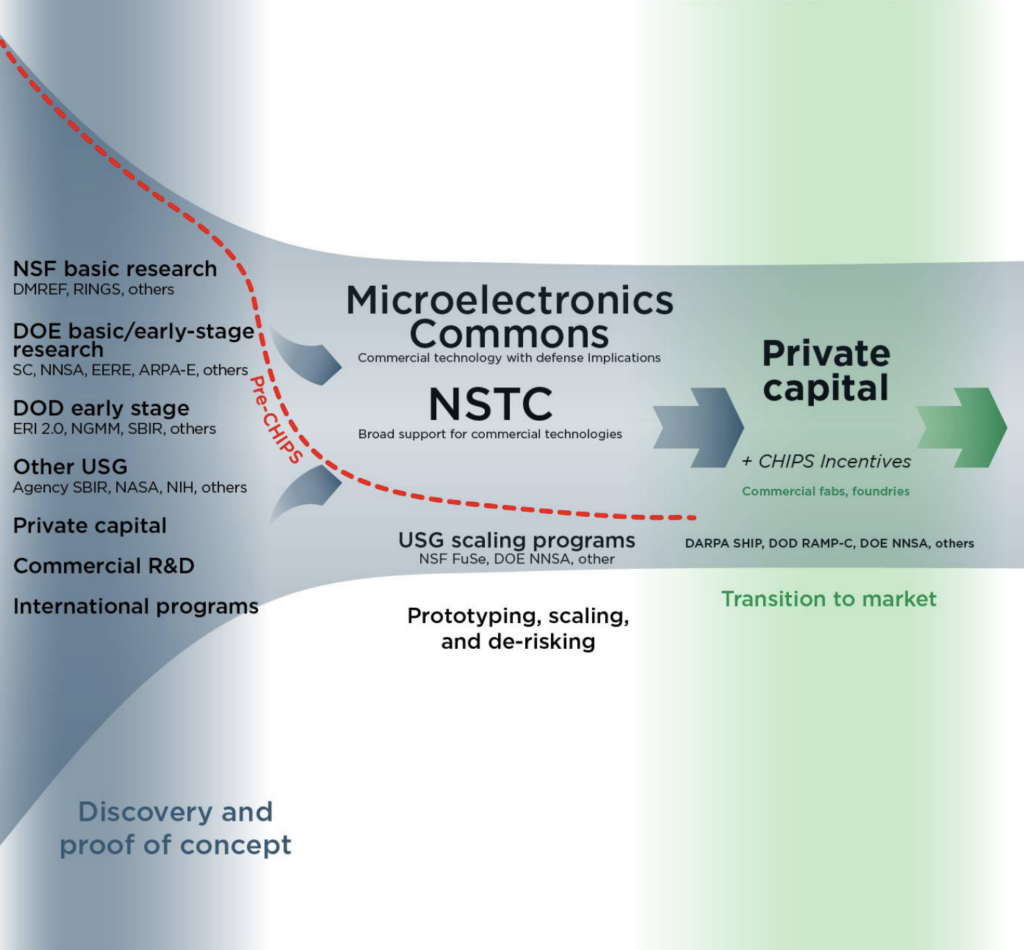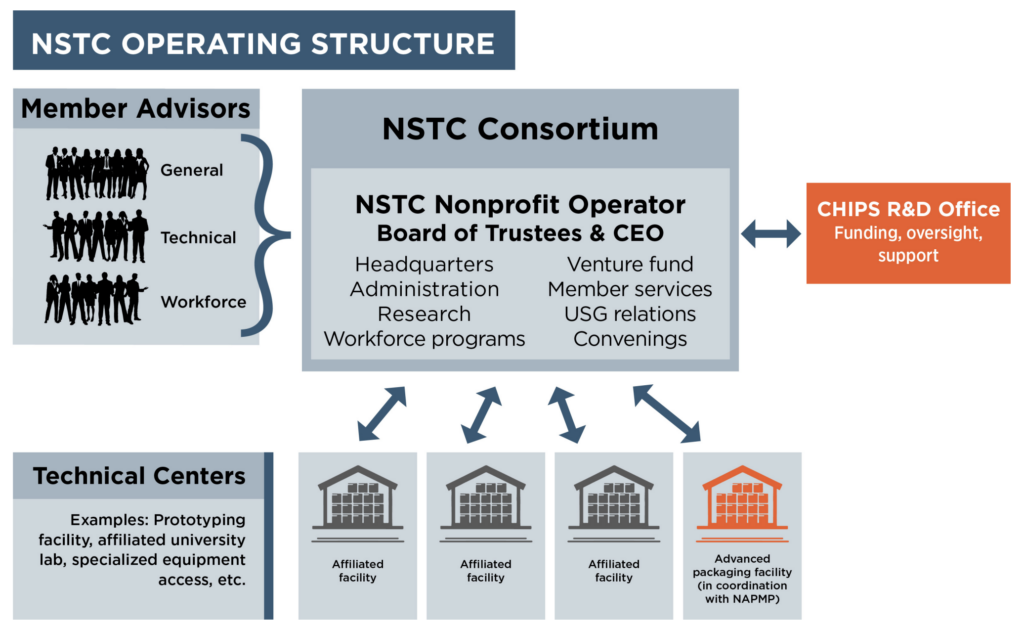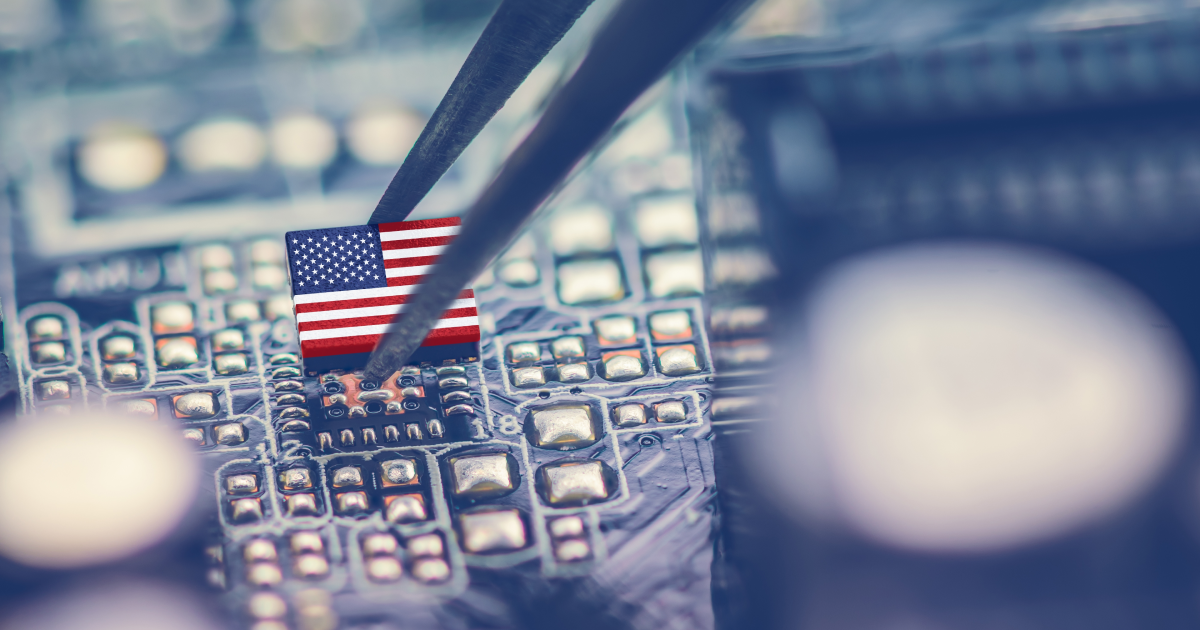On August 9, 2022, President Biden signed the CHIPS and Science Act into law. The act’s name clearly explains its purpose; “Creating Helpful Incentives to Produce Semiconductors.” Chip shortages during the pandemic, particularly in the automotive industry, highlighted the need for a better semiconductor supply chain based in America. Even now, after the pandemic has subsided, shortages continue to plague automotive, industrial manufacturing, and high-tech industries.
Recently, on April 25, 2023, the U.S. Department of Commerce’s National Institute of Standards and Technology (NIST) made headway toward the goals of the CHIPS Act—releasing a paper titled “A Vision and Strategy for the National Semiconductor Technology Center (NSTC).” U.S. Secretary of Commerce Gina Raimondo commented, “The NSTC will ensure that the U.S. leads the way in the next generation of semiconductor technologies…While the manufacturing incentives of the CHIPS Act will bring semiconductor manufacturing back to the U.S., a robust R&D ecosystem led by the NSTC will keep it here.”
How will the NSTC create this R&D ecosystem? The paper lays out three high-level goals for how the center will achieve its mission and advance the U.S. semiconductor supply chain.
Goal #1: Grow America’s Leadership in Semiconductor Technology
Currently, Taiwan produces more than 60% of the world’s semiconductors and over 90% of the most advanced semiconductors (The Economist); Taiwan-based TSMC alone accounts for 55% of the world supply—making it more critical than ever for the U.S. to invest in semiconductors especially as tensions between China and Taiwan continue. Check out Resilinc’s special report, China – Taiwan Risks to the Global Semiconductor Industry, to learn more.
To foster America’s leadership in semiconductor technology, The Department of Commerce plans to offer NSTC memberships to government agencies, national laboratories, industries, customers, suppliers, educational institutes, entrepreneurs, workforce representatives, and investors. (International companies and research organizations are also expected to be able to participate, albeit with some restrictions.)
With a membership, participants can access exclusive research, facilities, workforce programs, shared roadmaps, standards development, and data sets. In the future, the NSTC may also host visiting researchers through fellowships, residencies, and technical exchange programs—with most work taking place at facilities and institutions in the U.S.
Goal #2: Create Semiconductors Faster and More Efficiently
Acting as a headquarters, place to convene, and place to conduct research, the NSTC will provide access to shared facilities, digital assets, and technical expertise for advancing the design, prototyping, manufacturing, packaging, and scaling of semiconductors—in order to create semiconductors faster and more efficiently.
In addition to acting as a headquarters, there will also be a network of affiliated centers nationwide. These centers may be established by building new facilities, acquiring existing facilities, or collaborating in existing spaces. In these spaces, NSTC will conduct and fund research for developments that will primarily benefit semiconductors 5 to 15 years in the future.
To support this research and better understand the biggest challenges of growing the semiconductor industry, the NSTC will consult with world-class experts from the industry, academia, DOE national laboratories, federally funded research and development centers, and government agencies. These experts will help prioritize work that meets long-term needs and delivers the most significant impacts to the semiconductor industry.

Goal #3: Build a Sustainable Workforce Development Ecosystem
The final goal is to build a sustainable workforce development ecosystem for the semiconductor industry. According to Deloitte, by 2030, more than one million additional skilled workers will be needed to meet the demands of the global semiconductor industry. This includes electrical engineers, electricians, pipefitters, welders, and more.
To support this workforce, the NSTC plans to coordinate efforts to recruit, train, and retain workers, including groups traditionally under-represented in the industry. “This center will give the U.S. semiconductor industry an enduring technological lead and help develop a skilled workforce capable of manufacturing the world’s most advanced devices,” said NIST Director Laurie E. Locascio.
The paper states four necessary steps to create this workforce. First, the NSTC must work with other institutes (such as government agencies and educational institutes) to develop training programs. Next, the NSTC should establish a clearinghouse to collect information on best practices for workforce training programs. Third, the NSTC should create more opportunities in semiconductor and microelectronic design. Finally, the NSTC should act as a space to strategize and solve labor-related challenges.
Moving Forward with the NSTC
On April 26, 2023, The Department of Commerce issued a call for nominations to form a selection committee that will choose the board of trustees for a non-profit that will serve as the operator for the NSTC. This non-profit will act independently of The Department of Commerce, but The Department of Commerce will continue to refine and finalize plans for establishing the NSTC.
Later this year, The Department of Commerce will work to establish the NSTC using funds appropriated by Congress. Of the $50 billion invested by The Chips for America initiative, $11 billion in funding has been set aside for R&D and the NSTC.

Chip imbalances are set to impact industries for years to come, especially the automotive, electronics, industrial manufacturing, and biotech sectors. The CHIPS Act and subsequent initiatives like the NSTC are key to helping the US achieve its goal of strengthening US semiconductor supply chains—time will tell how these initiatives play out.
To learn more about the current state of semiconductors, check out the Resilinc Special Report: Global Semiconductor Industry Review and What to Expect in 2023.





